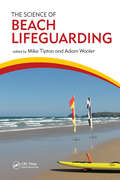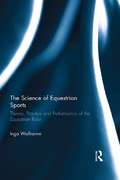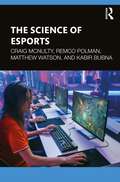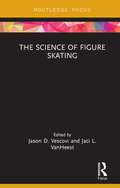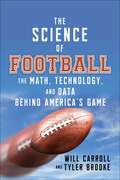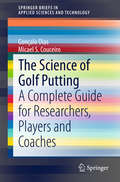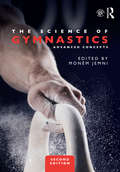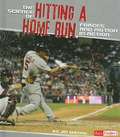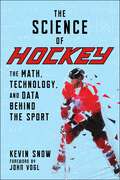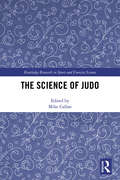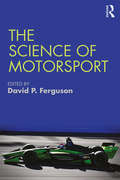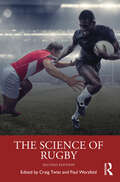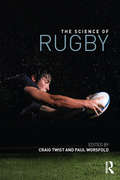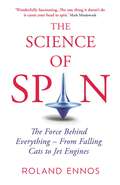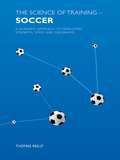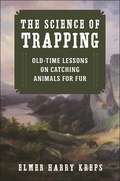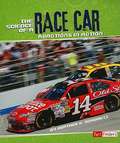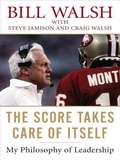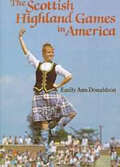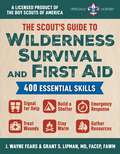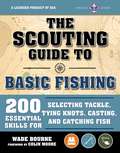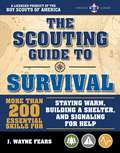- Table View
- List View
The Science of Beach Lifeguarding
by Mike Tipton Adam WoolerThe World Health Organization’s recently published Global Report on Drowning found that drowning is the third leading cause of unintentional injury death worldwide—making the information presented in this new book an important part of the global effort to reduce this health risk.Written by leading researchers and academics from around the world, The Science of Beach Lifeguarding focuses on the scientific evidence that underpins what is taught to and practised by beach lifeguards. It is the first book to pull together all the different areas involved in beach lifeguarding and evaluate their evidence base.An accessible and informative reference underpinned by the best current research, the book’s key themes cover the context of beach lifeguarding, the physical environment in which lifeguards work, medical aspects, practical lifeguarding techniques, physiological standards for lifeguards, safety education, and future developments in beach lifeguarding.The book presents groundbreaking work quantifying the scientific rationale behind a universally accepted fitness standard. It supplies an in-depth examination of the risks and hazards associated with the beach environment, including rip currents and cold water immersion.The book includes a state-of-the-art review of drowning and a comprehensive chapter on first aid. Detailing the recently announced 2015 European Resuscitation Council Guidelines, this book is a must-have for beach lifeguards, beach lifeguard managers, search and rescue personnel, paramedics, sports scientists, health and safety practitioners, and occupational health practitioners.
The Science of Climbing and Mountaineering (Routledge Research in Sport and Exercise Science)
by Ludovic Seifert Peter Wolf Andreas SchweizerThis is the first book to explore in depth the science of climbing and mountaineering. Written by a team of leading international sport scientists, clinicians and climbing practitioners, it covers the full span of technical disciplines, including rock climbing, ice climbing, indoor climbing and mountaineering, across all scientific fields from physiology and biomechanics to history, psychology, medicine, motor control, skill acquisition, and engineering. Striking a balance between theory and practice, this uniquely interdisciplinary study provides practical examples and illustrative data to demonstrate the strategies that can be adopted to promote safety, best practice, injury prevention, recovery and mental preparation. Divided into six parts, the book covers all essential aspects of the culture and science of climbing and mountaineering, including: physiology and medicine biomechanics motor control and learning psychology equipment and technology. Showcasing the latest cutting-edge research and demonstrating how science translates into practice, The Science of Climbing and Mountaineering is essential reading for all advanced students and researchers of sport science, biomechanics and skill acquisition, as well as all active climbers and adventure sport coaches.
The Science of Equestrian Sports: Theory, Practice and Performance of the Equestrian Rider
by Inga WolframmThe Science of Equestrian Sports is a comprehensive study of the theory and practice of the rider in equine sport. While most scholarship to date has focused on the horse in competition, this is the first book to collate current data relating specifically to riders. It provides valuable insight into improving sporting performance and maintaining the safety of both the horse and the rider. Drawing on the latest scientific research, and covering a wide range of equestrian disciplines from horseracing to eventing, the book systematically explores core subjects such as: physiology of the rider sport psychology in equestrian sport preventing injury biomechanics and kinematics coaching equestrian sport the nature of horse-rider relationships This holistic and scientific examination of the role of the horse rider is essential reading for sport science students with an interest in equestrian sport and equitation. Furthermore, it will be an invaluable resource for instructors, coaches, sport psychologists, or physiologists working with equestrian athletes.
The Science of Esports
by Matthew Watson Craig McNulty Remco Polman Kabir BubnaThe Science of Esports draws from contemporary research and coach expertise to examine esports athlete health and performance from a range of disciplinary perspectives, including physiology, psychology, sociology, and nutrition. The rapid expansion of the esports industry has elevated competitive video gaming into the realm of high performance, requiring players, coaches, and practitioners to implement interdisciplinary approaches to performance support. The book covers key topic areas such as: What esports is and similarities and differences to sport Game-specific training Physiological and psychological consideration for esports athletes Social aspects of player performance and the social environment of esports Esports coaching and structure of esports performance environments Technology and its use in esports Safeguarding, cheating, and gambling This book includes worked examples and case studies to allow immediate implementation into practice for esports athletes and coaches. It summarises the current state of research to inform researchers and identify gaps in knowledge. This book is critical reading for students of esports and related courses. It serves as the first scientific resource designed to provide athletes, coaches, and practitioners with interdisciplinary insights into esports health and performance.
The Science of Figure Skating (Routledge Research in Sport and Exercise Science)
by Jason D. Vescovi Jaci L. VanHeestThe Science of Figure Skating is the first book to provide an evidence-based and comprehensive reference for the scientific underpinnings of this complex Olympic sport, where early specialization presents unique challenges for coaches and athletes alike. Drawing on cutting-edge research and featuring contributions from leading academics and practitioners, the book covers key topics of health, training and high performance in figure skating, including: Physiological demands Nutrition and hydration Training methods Psychology and mental performance Novel issues relating to performance such as travel and jet lag Technological innovation Effectively and succinctly applying theory to practice, The Science of Figure Skating is a valuable resource on integrating sport science concepts into training and performance. It is essential reading for any applied sport science student or researcher with an interest in winter sports, and coaches, sport science officers, nutritionists or clinicians involved in figure skating.
The Science of Football: The Math, Technology, and Data Behind America's Game
by Will Carroll Tyler BrookeInThe Science of Football, sportswriter and injury expert Will Carroll teams up with writer and podcast host Tyler Brooke to show how understanding the science behind American football helps fans appreciate the sport even more. The authors cover topics like injuries, equipment, and analytics from all sides of the game, including offense, defense, and special teams. After reading this fascinating addition to the successful Science of series, football enthusiasts at the professional, college, and high school levels and science geeks alike will better appreciate the game--no matter which teams are playing!
The Science of Golf Putting
by Gonçalo Dias Micael S. CouceiroThis SpringerBrief explores the motor performance and biomechanics of golf putting, providing methodologies, studies and approaches to this concept. Presenting outcomes of research published over the past six years, it offers guidelines from a scientifically oriented perspective, and employs new technologies and mathematical methods to assess golf putting. The chapters cover aspects such as pendulum-like motion in sports, setting up the experimental design, and performance metrics for putting variables. Paving the way for an improved understanding of what leads to failure and success in golf putting, this book offers an invaluable reference source for sports scientists, engineers and mathematicians, as well as golfers.
The Science of Golf: The Math, Technology, and Data
by Will HaskettThe perfect gift for golf enthusiasts of all experience levels! InThe Science of Golf, seasoned sports broadcaster Will Haskett examines the science behind the beloved sport of golf. The author covers topics like the swing, the body, the mind, the equipment, the agronomy of the course, analytics, and much more. Haskett explains what makes the ball fly, how different swings can accomplish the same result, why different playing fields impact each shot, and how a rapid improvement in technology has made the sport easier and more accessible. With insight from industry experts, sports scientists, and some of golf&’s best minds, this book may surprise golf gurus and science geeks alike!
The Science of Gymnastics: Advanced Concepts
by Monèm JemniThe Science of Gymnastics provides the most comprehensive and accessible introduction available to the fundamental physiological, biomechanical and psychological principles underpinning performance in artistic gymnastics. The second edition introduces three new sections: applied coaching, motor learning and injury prevention and safety, and features contributions from leading international sport scientists and gymnastics coaches and instructors. With case studies and review questions included in each chapter, the book examines every key aspect of gymnastic training and performance, including: physiological assessment diet and nutrition energetics kinetics and kinematics spatial orientation and motor control career transitions mental skills training and perception injury assessment and prevention, with clinical cases advanced case studies in rotations, vault approach and elastic technologies in gymnastics. A fully dedicated website provides a complete set of lecture material, including ready-to-use animated slides related to each chapter, and the answers to all review questions in the book. The book represents an important link between scientific theory and performance. As such, The Science of Gymnastics is essential reading for any student, researcher or coach with an interest in gymnastics, and useful applied reading for any student of sport science or sports coaching.
The Science of Hitting a Home Run: Forces And Motion In Action (Action Science Ser.)
by Jim WhitingDescribes the science behind hitting a home run, including pitch types, different bats, and force
The Science of Hockey: The Math, Technology, and Data Behind the Sport
by Kevin SnowWhether you&’re a casual hockey observer or a passionate fan who can&’t get enough of the game, there&’s something for everyone in The Science of Hockey. Author Kevin Snow spoke with former players and coaches, along with numerous industry experts and media analysts to discover how science, data, and technology have impacted the sport of hockey over the years. Learn more about the nuances of a skating stride, how a puck is manufactured, the optimal temperature for making ice, and what exactly it is that makes some of the greatest players in the world so special. Even take a look to the future to find out how virtual reality can play a part in player training methods. Just when you thought you knew it all, along comes The Science of Hockey to share even more knowledge about the coolest game on ice.
The Science of Judo (Routledge Research in Sport and Exercise Science)
by Mike CallanThe Science of Judo is the first book to set out and discuss the science, coaching and history behind judo performance. Evidence-based and informed by the latest research, the book offers practical guidance on preparing athletes for high performance and understanding the core tenets of sport science underpinning it. Featuring contributions from world-leading experts, the book consists of chapters on all aspects of judo performance, including: The historical development of judo and its physical, intellectual and moral role Physical preparation for competition, coaching and training strategies Skill acquisition, talent identification and development Nutrition and lifestyle of judoka Performance analysis and biomechanics Injury epidemiology and prevention Special considerations for female and young judoka Clearly written and accessible, The Science of Judo provides upper-level students and researchers, and coaches and sport science staff working with judoka, with the most thorough and authoritative reference on sport science applied to judo currently available.
The Science of Motorsport
by David P. FergusonDespite its worldwide following, high levels of investment and scientific complexity, there is a lack of evidence-based literature on the science of human performance in motorsport. Focusing on the physiological, psychological and sport medicine aspects of training, performance, injury and safety, The Science of Motorsport is the first book to provide an accessible and up-to-date resource for stakeholders at all levels of motorsport. <P><P>Addressing the physiological and psychological stresses of racing across a full range of sports, from Formula 1 and IndyCar to NASCAR and endurance racing, the book includes chapters on: <li> nutritional and physical training strategies for drivers; <li>the driver’s neck; <li> injury rates and pathologies of open-wheel driving; <li> return to competition from concussion; <li> driver safety; <li> and considerations for pit crews and safety staff. <P><P>Accessibly written and made up of contributions from world-leading authorities in motorsport science research, this is a crucial resource for racing drivers, physical trainers, pit crew members and safety personnel, as well as researchers and students with an interest in applied sport physiology, applied sport psychology or sport medicine.
The Science of Rugby
by Craig Twist Paul WorsfoldCoaches, practitioners and medical staff working in the worldwide sport of rugby will frequently apply scientific principles to their programmes to inform the practice, performance, health, well-being and development of their athletes. This book explores the scientific principles underpinning the preparation and management of rugby players in both codes and modified versions of the sport. Applied examples are also provided throughout to understand the practical application of the material in a real-world context. This new edition of The Science of Rugby offers a significant contribution to the field of rugby science that will act as a useful resource to scientists, coaches, practitioners and students interested in rugby. New chapters and key topics include: • Physical and psychological preparation for rugby • Planning and monitoring of training • Managing fatigue, recovery and nutrition • Effects of different environmental conditions and travel on performance • The mechanics of rugby techniques and injury • Young players and talent identification • Considerations for training the female rugby player • Modified rugby, including rugby sevens, touch, tag and wheelchair rugby No other book bridges the gap between theory and applied practice in rugby, from grass roots to elite international standard, and therefore this is essential reading for any student, researcher, sport scientist, coach, physiotherapist or clinician with an interest in the game.
The Science of Rugby ("English Labouring-Class Poets, 1700–1900")
by Craig Twist Paul WorsfoldThe Science of Rugby is the only book to examine the scientific principles underpinning the preparation of rugby players for high performance. Drawing on the very latest scientific evidence, and covering both codes (union and league), the book explores every aspect of preparation and performance that introduces best practice by leading coaches and sports science professionals from around the rugby world. The book covers key topics such as: Physical preparation and conditioning Strength and power training Monitoring match and training demands Match-day strategies for enhancing physical and technical performance Management of fatigue and recovery Training and playing in the heat Travel and jet lag Injury epidemiology Psychological preparation Performance analysis Biomechanics Nutrition Talent identification and youth development The book also incorporates several case-studies to demonstrate how scientific principles have been applied in practice. No other book bridges the gap between theory and applied practice in rugby, from grass roots to elite international standard, and therefore this is essential reading for any student, researcher, sport scientist, coach, physiotherapist or clinician with an interest in the game.
The Science of Spin: The Force Behind Everything – From Falling Cats to Jet Engines
by Roland EnnosWhy exactly is the Earth round? How is it that boomerangs can turn in mid-air? And why do cats always land on their feet? From the solar system to spinning tops; hurricanes to hula hoops; powerplants to pendulums, one mysterious force shapes almost every aspect of our lives. A force which, despite its ubiquity, continues to confound, baffle and surprise. Artfully moving between astrophysics and anthropology, The Science of Spin provides a sweeping journey through space and time, from the creation of the Earth to the advent of the &‘fidget spinner&’. Charting the development of engineering and technology from the earliest prehistoric drills to the turbine engine, critically acclaimed author and scientist Roland Ennos presents a riveting account of human ingenuity and the seemingly infinite ways spin affects our daily lives.
The Science of Training - Soccer: A Scientific Approach to Developing Strength, Speed and Endurance
by Thomas ReillyPhysical training is a key part of preparing to play soccer (football) at any level, but organising a genuinely effective training programme requires both an understanding the physiological principles involved and a practical knowledge of the demands of the game. This book provides clear guidelines, an evidence base and a theoretical framework for proven effective soccer training. Includes: planning seasonal training to peak at the right time training for strength, speed, aerobic and anaerobic fitness designing appropriate sessions for training and rehabilitation best methods for recovery from exercise and reducing injury risk preparation for play in different environmental conditions evaluating the effectiveness of training programmes diet, sleep, lifestyle, young players and long-term development. Clear explanations of the physiological concepts and sport science research evidence are given throughout, and the book contains many examples to illustrate the training principles in practice. This is an essential text for students of the game and a valuable resource for coaches, physical trainers and sport scientists working in soccer (football).
The Science of Trapping: Old-Time Lessons on Catching Animals for Fur
by Harry Elmer Kreps Phillip Massaro"Trapping in itself is an art.” -Elmer Harry KrepsIn recent years, the fur trade has experienced a rebirth as nations such as Russia and China demand more and more of these fine pelts. Answering this demand is a growing contingent of modern-day trappers, poised to reap the rewards of this economic boom. While many have the niftiest gadgets and tools at their disposal when capturing animals, others still use time-tested trapping techniques.Such techniques originated and were perfected in the woods of North America. Counted among this previous generation of trappers is Elmer Harry Kreps, a man who grew up in the woods of the Northeast, where he fostered a great passion for nature and its life. Spending countless hours observing these creatures, he quickly learned to trap them. He collected his lessons into the now classic The Science of Trapping, an immensely useful book on the trade of capturing animals for fur.The Science of Trapping describes methods to capture various kinds of animals in both warm and cold months; skunk, fox, bear, mink, and the shy lynx are all covered, among others. Keps ends with a review of the various kinds of traps popular during his day. Interspersed throughout this helpful volume is a unique glimpse into the fur economy of the early twentieth century.Skyhorse Publishing is proud to publish a broad range of books for hunters and firearms enthusiasts. We publish books about shotguns, rifles, handguns, target shooting, gun collecting, self-defense, archery, ammunition, knives, gunsmithing, gun repair, and wilderness survival. We publish books on deer hunting, big game hunting, small game hunting, wing shooting, turkey hunting, deer stands, duck blinds, bowhunting, wing shooting, hunting dogs, and more. While not every title we publish becomes a New York Times bestseller or a national bestseller, we are committed to publishing books on subjects that are sometimes overlooked by other publishers and to authors whose work might not otherwise find a home.
The Science of a Race Car: Reactions in Action
by Heather E. SchwartzSqueal! The race is on, and expert drivers make it look easy to speed around the track. But without science, they'd be left in the dust. Come take a closer look at the science that makes a race car run.
The Score Takes Care of Itself: My Philosophy of Leadership
by Steve Jamison Bill Walsh Craig WalshThe last lecture on leadership by the NFL's greatest coach: Bill Walsh Bill Walsh is a towering figure in the history of the NFL. His advanced leadership transformed the San Francisco 49ers from the worst franchise in sports to a legendary dynasty. In the process, he changed the way football is played. Prior to his death, Walsh granted a series of exclusive interviews to bestselling author Steve Jamison. These became his ultimate lecture on leadership. Additional insights and perspective are provided by Hall of Fame quarterback Joe Montana and others. Bill Walsh taught that the requirements of successful leadership are the same whether you run an NFL franchise, a fortune 500 company, or a hardware store with 12 employees. These final words of 'wisdom by Walsh' will inspire, inform, and enlighten leaders in all professions.
The Scorecard Always Lies: A Year Behind the Scenes on the PGA Tour
by Chris LewisAs Tiger Woods broke down in tears on the 18th green at Royal Liverpool Golf Club, legions of spectators strained their eyes to read the emotion on his face. Like the millions watching on television, they knew that Tiger had just won the British Open, and that his father had recently died. Beyond that, however, they knew precious little -- only that he played with a Nike golf ball, carried an American Express card in his wallet, and, presumably, drove a Buick. They were hungry for more, but everything else about his off-course life, and those of his fellow pros, was forbiddingly well-guarded. Until now. InThe Scorecard Always LiesveteranSports Illustratedgolf correspondent Chris Lewis reaches past the results, stats, and sound-bites to focus on the personalities and personal lives of the sport's top players. While embracing all the drama and excitement of the 2006 PGA Tour season, he takes us inside the locker rooms, hotel rooms, and private planes to deliver an unrivaled, behind-thescenes look at the Tour and the men who play it. Lewis spent thirty weeks of the 2006 season on the road with the best golfers in the world, exploring their backstories, motivations, and preoccupations, and collecting telling, character-revealing tales. He bore witness to both the hard work and the privilege that frame their lifestyles. But he also discovered a Tour that to this point remained largely unknown -- one where a player while pursuing dreams of glory might also be suing his agent, going through a messy divorce, or looking to throw down in the locker room with one of his peers. There's John Daly trying to explain how his wife has just been taken off to jail. There's Chris Couch making a midnight, barefoot run through a derelict district of New Orleans, fearing he was about to be kidnapped, and taking refuge in a tattoo parlor. We watch as Tiger Woods tries to deal with losing his father to cancer, while refusing to abandon his fondness for blue humor. We see Phil Mickelson hanging with rock stars, sharing a Masters victory gift with a national championship-winning college football coach, and hooking up a sportswriter with a would-be groupie's phone number. All in all, we get a rare glimpse of the off-course lives of the Tour's stars and their supporting cast. At turns humorous, touching, and insightful, the book sheds new light on every aspect of Tour life, from easygoing Tuesday practice rounds to feverpitch Sunday showdowns, always taking care to show how their off-course concerns inform their every swing. Fans will savor the fullest portrait yet of a group of players who, throughout their successes and struggles, remain unfailingly smart, funny, and engaging, and make up the most intriguing subculture in all of sports.
The Scottish Highland Games in America
by Emily Ann Donaldson"This is a work of great value to all who seek knowledge of Scottish-American events, and who wish to understand what surely must be one of the most interesting, colorful, and evident ethnic occurrences in the U.S." -W. R. McLeod vice-chairman, Dunvegan Foundation Clan McLeod"The author's enthusiasm for the Scottish Highland Games, and indeed her expertise, are reflected in this long-awaited work. All who are interested in the story of this enduring and popular festival will be grateful to Ann Donaldson for her conscientious research. It is a fine tribute to those Americans of Scottish descent who have contributed to keep this unique aspect of their culture vibrantly alive in the New World." -Gerald Redmond author of The Sporting Scots of Nineteenth Century CanadaDiscover the Scottish Highland Games, celebrated in over thirty U.S. states every year. Participants compete in the caber toss, Highland dancing, piping and drumming, fiddling, and many more competitive and non-competitive events.The Scottish Highland Games in America recognizes the players and events that keep the modern Games alive and exciting. Readers will discover the history of the Games, rooted in Scotland and celebrated in the United States, Canada, Australia, New Zealand, and other countries where Scots have settled. A complete state-by-state listing of the Games and their events is also provided.ABOUT THE AUTHOR Emily Ann Donaldson is a devoted Games fan, a participant in Scottish country dancing, and a member of several Scottish associations.
The Scout's Guide to Wilderness Survival and First Aid: 400 Essential Skills—Signal for Help, Build a Shelter, Emergency Response, Treat Wounds, Stay Warm, Gather Resources
by Grant S. Lipman J. Wayne Fears2 books in 1 at a value price! Be Prepared! Time-tested advice on emergency preparedness. An official publication of the Boy Scouts of America! Each year hundreds of outdoor enthusiasts find themselves in an unexpected outdoor emergency. They get lost, injured, or stranded. Cut off from the rest of the world, they have to depend upon their survival skills to survive. For most people, thanks to modern communications such as cell phones, satellite messengers, and personal locator beacons (PLB), it is merely a sobering two- or three-hour adventure. However, for some who did not take the proper precautions before they left home or do not have survival skills, it can end in tragedy.The Scout's Handbook for Wilderness Survival and First Aid offers practical advice to help with: Building a firePurifying waterIdentifying common edible plants and mushroomsSignaling for helpBuilding simple sheltersPractical navigation skillsTreating woundsResponding in a medical emergencyAnd so much more! Since 1910, the Boy Scouts of America has helped build the future leaders of this country by combining educational activities and lifelong values with fun. The BSA is committed to training youth in responsible citizenship, character development, and self-reliance through participation in a wide range of outdoor activities.
The Scouting Guide to Basic Fishing: 200 Essential Skills for Selecting Tackle, Tying Knots, Casting, and Catching Fish (A BSA Scouting Guide)
by Wade Bourne The Boy Scouts of AmericaIn The Scouting Guide to Basic Fishing, current Scouts, Scout alumni, and anyone interested in the outdoors are provided with a step-by-step guide that masterfully breaks down the art of fishing with diagrams, vivid photographs, and lessons on everything the beginner needs to know, including: Different types of fishing equipment and how to select the best tackleBaiting techniques for artificial and natural baitsSelecting the best fishing spotThe many choices of boats, motors, and boating accessoriesMethods for cooking and cleaning your catchAnd so much more! Since 1910, the Boy Scouts of America has helped build the future leaders of this country by combining educational activities and lifelong values with fun. The BSA is committed to training youth in responsible citizenship, character development, and self-reliance through participation in a wide range of outdoor activities.
The Scouting Guide to Survival: More than 200 Essential Skills for Staying Warm, Building a Shelter, and Signaling for Help (BSA Scouting Guides)
by J. Wayne FearsIn Scouting’s Guide to Survival, current Scouts, Scout alumni, and readers interested in the outdoors are provided with time-tested advice on emergency preparedness. Some practical tips include: How to build a fire How to purify water How to identify common edible plants and mushrooms How to signal for help How to build simple shelters Learn practical navigation skills And so much more! Since 1910, the Boy Scouts of America has helped build the future leaders of this country by combining educational activities and lifelong values with fun. The BSA is committed to training youth in responsible citizenship, character development, and self-reliance through participation in a wide range of outdoor activities.
